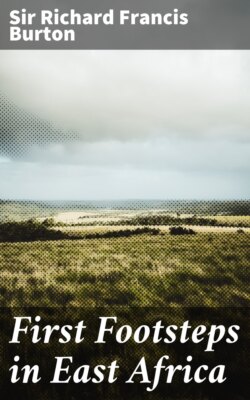Читать книгу First Footsteps in East Africa - Sir Richard Francis Burton - Страница 10
На сайте Литреса книга снята с продажи.
ОглавлениеZayla commands the adjacent harbour of Tajurrah, and is by position the northern port of Aussa (the ancient capital of Adel), of Harar, and of southern Abyssinia: the feuds of the rulers have, however, transferred the main trade to Berberah. It sends caravans northwards to the Dankali, and south-westwards, through the Eesa and Gudabirsi tribes as far as Efat and Gurague. It is visited by Cafilas from Abyssinia, and the different races of Bedouins, extending from the hills to the seaboard. The exports are valuable—slaves, ivory, hides, honey, antelope horns, clarified butter, and gums: the coast abounds in sponge, coral, and small pearls, which Arab divers collect in the fair season. In the harbour I found about twenty native craft, large and small: of these, ten belonged to the governor. They trade with Berberah, Arabia, and Western India, and are navigated by "Rajput" or Hindu pilots.
Provisions at Zayla are cheap; a family of six persons live well for about 30_l._ per annum. The general food is mutton: a large sheep costs one dollar, a small one half the price; camels' meat, beef, and in winter kid, abound. Fish is rare, and fowls are not commonly eaten. Holcus, when dear, sells at forty pounds per dollar, at seventy pounds when cheap. It is usually levigated with slab and roller, and made into sour cakes. Some, however, prefer the Arab form "balilah," boiled and mixed with ghee. Wheat and rice are imported: the price varies from forty to sixty pounds the Riyal or dollar. Of the former grain the people make a sweet cake called Sabaya, resembling the Fatirah of Egypt: a favourite dish also is "harisah"—flesh, rice flour, and boiled wheat, all finely pounded and mixed together. Milk is not procurable during the hot weather; after rain every house is full of it; the Bedouins bring it in skins and sell it for a nominal sum.
Besides a large floating population, Zayla contains about 1500 souls. They are comparatively a fine race of people, and suffer from little but fever and an occasional ophthalmia. Their greatest hardship is the want of the pure element: the Hissi or well, is about four miles distant from the town, and all the pits within the walls supply brackish or bitter water, fit only for external use. This is probably the reason why vegetables are unknown, and why a horse, a mule, or even a dog, is not to be found in the place.
[30] "Fid-mer," or the evening flyer, is the Somali name for a bat. These little animals are not disturbed in houses, because they keep off flies and mosquitoes, the plagues of the Somali country. Flies abound in the very jungles wherever cows have been, and settle in swarms upon the traveller. Before the monsoon their bite is painful, especially that of the small green species; and there is a red variety called "Diksi as," whose venom, according to the people, causes them to vomit. The latter abounds in Gulays and the hill ranges of the Berberah country: it is innocuous during the cold season. The mosquito bites bring on, according to the same authority, deadly fevers: the superstition probably arises from the fact that mosquitoes and fevers become formidable about the same time.
[31] Such a building at Zayla would cost at most 500 dollars. At Aden, 2000 rupees, or nearly double the sum, would be paid for a matted shed, which excludes neither sun, nor wind, nor rain.
